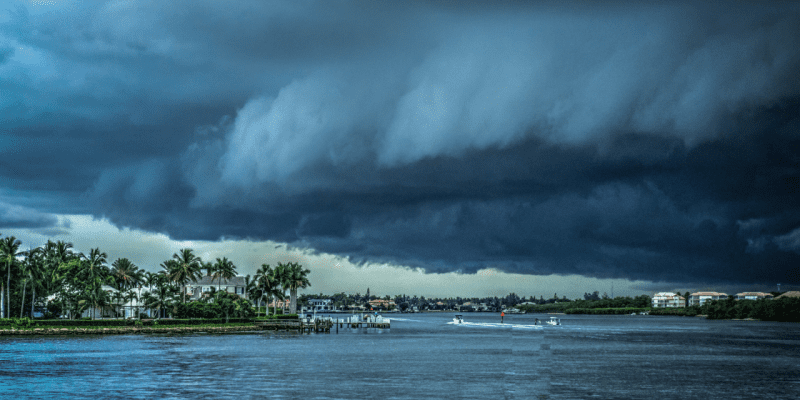Hurricane season in the Atlantic brings with it a plethora of dangerous and devastating weather. But how does all of this get started?
All hurricanes are essentially fueled by two simple things: heat and water. Hurricanes generally begin above the equator, where the waters are significantly warmer. The air just above the ocean’s surface takes in heat and moisture and, as the hot air rises, it leaves the air below it with a lower pressure. This cyclical process repeats and produces swirls in the air, according to NASA. This creates a thunderstorm that has the potential to turn into a hurricane.
Warm water in the Atlantic is really the first key element hurricanes need to get started. Another important key factor is wind shear. Wind shear, according to Federal Aviation Administration, is a change in wind speed and/or direction over a short distance. Wind shears can be either horizontal or vertical and are most commonly caused by strong differences in temperature. These contribute to the cyclone of warm and cool air that starts a hurricane.
These two ingredients for hurricanes don’t just happen on their own, though. Gerry Bell, the lead seasonal hurricane forecaster for NOAA’s Climate Prediction Center, says that “there are two dominant climate patterns that really control the wind and pressure across the Atlantic.
The El Niño/La Niña cycle is the first of these climate patterns. El Niño is a large-scale ocean-atmosphere climate interaction that causes periodic warming in the ocean surface temperatures. These effects are seen in the winter season, with wetter-than-average conditions expected. La Niña is essentially the opposite of El Niño, in which it represents below-average ocean surface temperatures, but slightly warmer temperatures in the Southeast region.
The second climate pattern that impacts hurricanes is the Atlantic Multidecadal Oscillation (AMO). This is a climate trend that has a time span of 25 to 40 years and is generally associated with warmer waters in the Atlantic. When the AMO is in a warm phase, there tends to be stronger hurricane patterns. Currently, we have been in a warm phase AMO, conducive to hurricanes, since 1995.
Hurricanes start out as tropical cyclones. Once a tropical cyclone’s winds have a sustained speed of 39 to 73 mph, it is then considered a tropical storm and it gets a name from the list put out by the World Meteorological Organization. If the sustained winds reach speeds of 74 to 95 mph, the storm becomes a Category 1 hurricane.
| Category | Sustained Wind Speed | Potential Damage |
| 1 | 74-94 mph | Minimal – some roof leakage, gutter damage, snapped tree branches |
| 2 | 96-110 mph | Moderate – major roof and siding damage, uprooted trees causing road blockage, power loss for days to weeks |
| 3 | 111-129 mph | Extensive – gable and decking damage, many uprooted trees, extended power outages |
| 4 | 130-156 mph | Extreme – roof and exterior walls destroyed, snapped trees, power outages for weeks to months |
| 5 | 157 mph or higher | Catastrophic – high fraction of framed houses destroyed, power outages for weeks to months, large areas uninhabitable for weeks to months |
About Regency DRT
Regency DRT is a nation-wide leader in emergency services and property restoration services with 7 offices in Florida and Michigan, including West Palm Beach, Orlando, Sunrise, Port St Lucie, Panama City, Fort Walton/Pensacola and Detroit. Regency DRT was founded on the belief that a restoration company should provide exceptional quality of services to their customers while maintaining the industry’s highest standards.
Regency DRT offers 24 Hour Emergency Response and has extensive experience in working with insurance companies and claims adjusters on property insurance claims, coordinating everything from initial response until the property is restored to pre-loss conditions. With our extensive training and knowledge of restoration services, we are able to quickly respond with the necessary amount of equipment, resources and staff for the unique needs of the job, whether it’s a single residential loss, large loss or area-wide disaster.
Regency DRT is also a proud Member of Disaster KleenUp International (DKI), North America’s largest disaster restoration contracting organization. Being a DKI member also provides us with nationwide affiliates and partners to provide nationwide coverage to our clients. Call us at 1 (888) 354-2447 or visit our website at RegencyDRT.com


